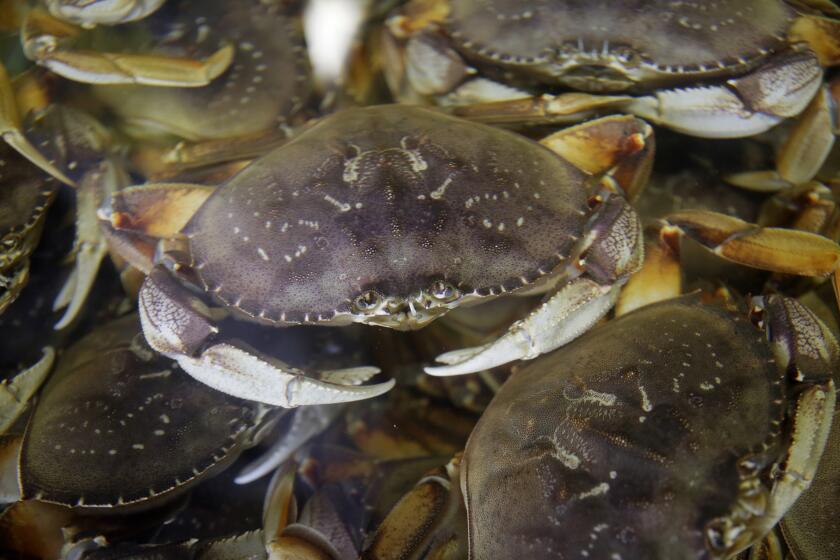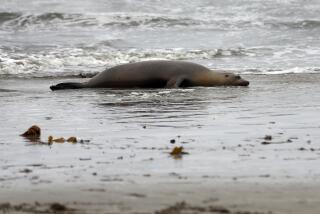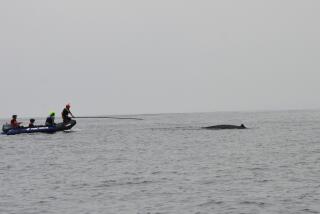What’s tangling up the humpback whales? A food chain snarled by climate change
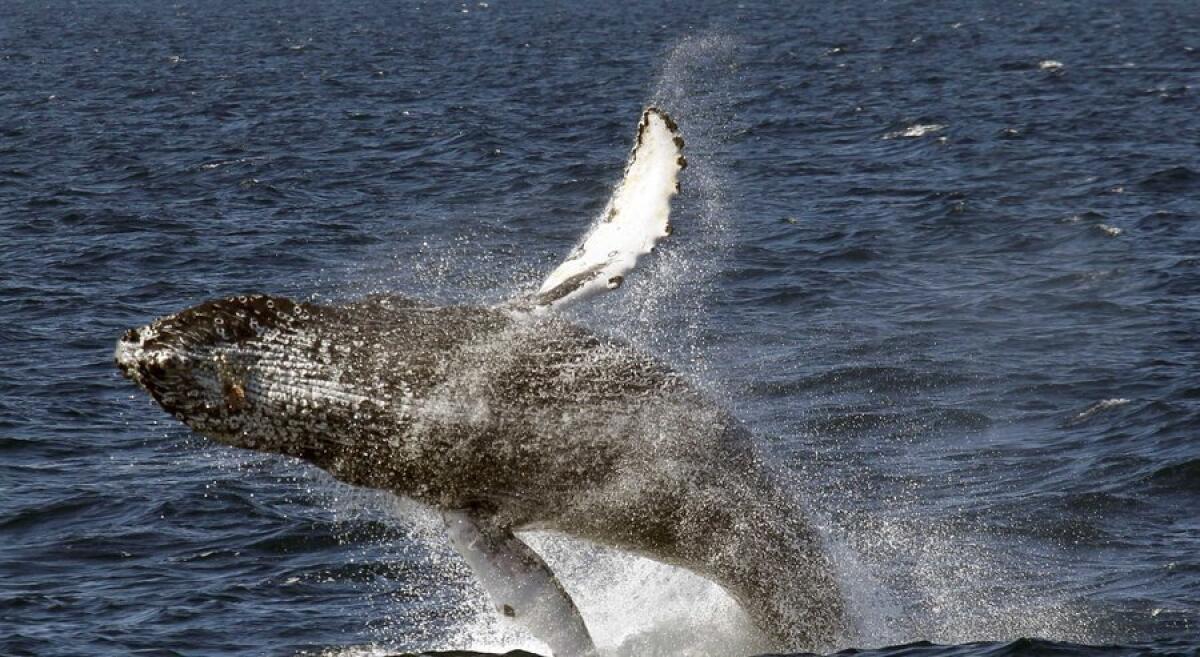
Karin Forney still remembers when an unusual number of humpback whales started showing up in Monterey Bay a few winters ago. She could see them out her window — so close to the surf that kayakers could literally paddle up to them.
But with this delightful arrival came an alarming number of humpbacks getting entangled in fishing gear that cut into their flesh and often led to death. This sudden crisis confounded scientists, fishermen and animal rights groups.
“We went from virtually no humpback whale entanglements to one every other week — and then during peak, in the spring of 2016 ... we were basically on call every single day,” said Forney, an applied marine ecologist at the NOAA Fisheries who scrambled to help the rescue efforts.
“The whales just kept coming.”
In a study published Monday, a team of scientists solved the mystery. They showed how one dramatic shift in the marine ecosystem, exacerbated by an ever-warming planet, could set off a domino effect across California.
An unprecedented heat wave in the Pacific Ocean, dubbed “the blob,” had pushed anchovies and other humpback food closer to shore — right where most Dungeness crab fishermen tend to set their gear. The crab season, in turn, had been unusually delayed by the blob, so fishing did not peak until the whales started coming into town.
“The timing of everything is so sensitive from an ecosystem perspective,” said Jarrod Santora, lead author of the study and an ecosystem oceanographer with NOAA Fisheries and UC Santa Cruz. “We could have prevented this perfect storm from happening in 2016 — if we had this ecosystem science and a communication system in place.”
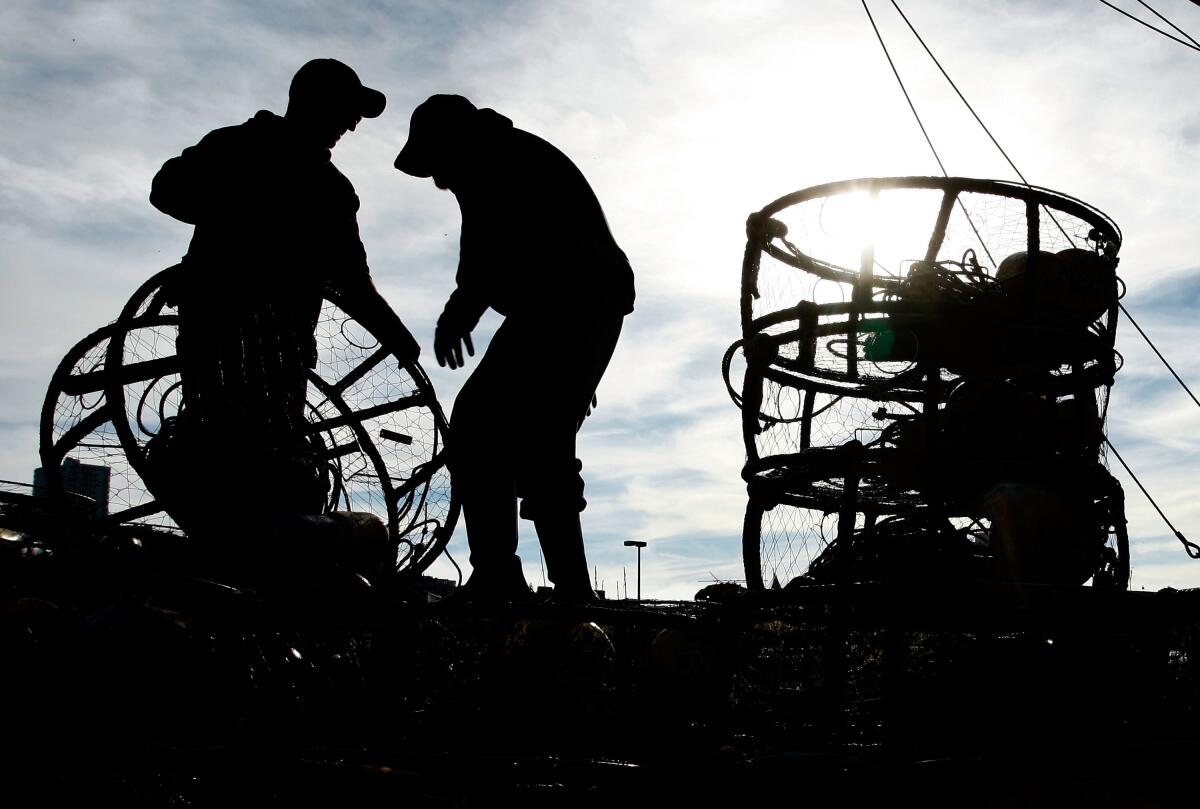
The ocean is already a complicated place to live, and it’s not getting easier. Marine heat waves have doubled in frequency since 1982, and recent reports declared that global ocean temperatures in 2019 were the warmest on record — a trend that has continued for the last decade.
The chemistry of the water itself is acidifying at alarming rates — the cost of relying on our oceans to absorb so much of the world’s heat and carbon emissions.
Following the blob, which took hold in 2014 and overwhelmed marine life for three years, scientists documented the largest toxic algae bloom in the West Coast. Malnourished sea lions washed ashore, another study confirmed, and more than half a million seabirds starved to death — strewn across the coast from California to the Gulf of Alaska.
Monday’s study, published in the journal Nature Communications, brought together different scientists and data sources to piece together a bigger ecosystem picture in California.
Humpback whales eat both krill and anchovies, depending on what’s available. Krill tend to thrive in deeper and colder waters — and well up with the typical currents along the California coast.
But during the blob years, there was very little krill for the whales to eat, and what few anchovies were available were being squeezed into areas closer to shore in what scientists call a habitat compression. Humpbacks followed these clusters of anchovies to shallower and shallower waters, especially in Monterey, Point Reyes and Half Moon Bay.
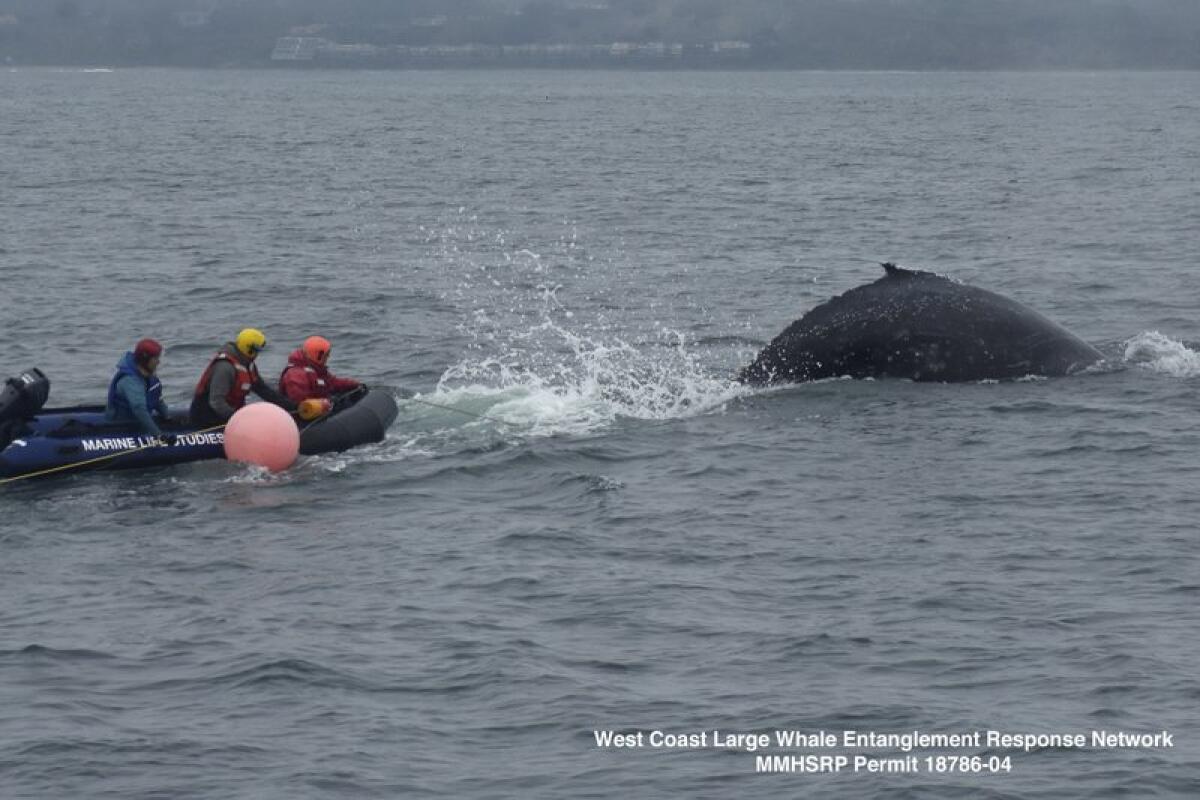
The entanglements with fishing gear soared starting in 2014 and 2015, but then in 2016, a domoic acid outbreak (also thanks to the blob) kept the crab fishery shut until the first week of April — instead of its usual start date in mid-November.
This amplified the co-occurrence, as Santora calls it, of the whales being forced to feed in smaller concentrations closer to shore — right where the prime crab fishing areas tend to be. By 2016, there were more than 50 recorded entanglements, he said, “and that is just astonishing.”
“Historically, we always said: ‘My, aren’t we lucky that the crab fishery operates mostly from November through February, maybe March, and the whales are here from only March to November,” said Forney, the NOAA researcher in Monterey Bay, who was also an author on the study.
But more and more fishermen, she said, are sticking with crab through June. Salmon fishing, which many used to switch to around February, has become less reliable in this changing world.
John Mellor, who fishes mostly for crab out of San Francisco, said he’s eager for more science and coordination to protect all the marine life that makes California special.
“I’ve been fishing for 40 years, and things changed so drastically starting about 2013, 2014 … it was profound,” he said. “Suddenly the water was 10 degrees hotter, the forage was disrupted and whale patterns were disrupted, and it caused this whole chain reaction.”
The industry — the most valuable fishery in California — has been taking this very seriously, he said. “People are using best practices, like not using a bunch of slack rope or extra buoys on the surface.”
Tension was high in light of a recent lawsuit by the Center for Biological Diversity, which threatened to restrict crab fishing. A conservation plan is now being developed to address these marine interconnections.
Forget Rice-a-Roni. The real San Francisco treat is Dungeness crab. The season opened Dec. 15.
The crab fishermen are treading cautiously and decided to start this season a little later, Mellor said, because there were still whales popping up in San Francisco. “If we entangled even one or two, it could’ve resulted in the season being closed all year.”
They lost the profitable Thanksgiving rush and the most productive time to fish for crabs — when they’re just coming out of their molt. But taking care of and minding the balance of the ocean, Mellor said, is in everyone’s best interest.
Mellor is part of what he calls a dedicated “hotshot crew” of scientists, fishermen, environmentalists and wildlife officials who got together when the entanglements first increased. Santora and Forney’s study provided the scientific baseline needed for this working group, which has been developing tools to better anticipate and avoid entanglement.
Many say this group, which was urgently convened in 2015 by the state’s Ocean Protection Council and wildlife and fisheries officials, is the future of ocean management: Setting aside differences, sharing field notes, compiling all the different data streams and figuring out how these multiple issues overlap. Reported entanglements have since dropped off but still remain higher than before the spike.
The scientists are now developing a website that will use all this data to forecast the areas where whales are most likely to be feeding off the West Coast. Crab fishermen could then decide where — and where not — to set their traps. Regulators could make calls on when to open or close a fishery.
Using these new tools and thinking about the ecosystem as a whole — rather than the traditional approach of focusing on one type of fish or species at a time — will help everyone adjust to more rapid and frequent changes in the marine environment.
They’ve created a framework, said Paige Berube of the Ocean Protection Council, to assess and manage risk in a way that can protect both ecological and economic imperatives.
“We can protect biodiversity, protect whales and sea turtles,” she said, “and also ensure that we continue to have thriving commercial fisheries that are iconic to our coastal identity as Californians.”
More to Read
Sign up for Essential California
The most important California stories and recommendations in your inbox every morning.
You may occasionally receive promotional content from the Los Angeles Times.
